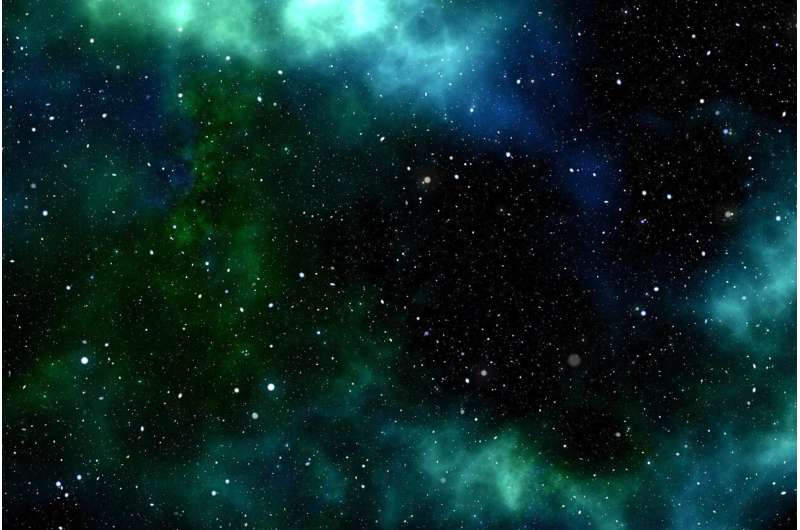
Copernical Team
South Korea joins space race in tech drive as Russia's isolation deepens over war in Ukraine

South Korea is preparing a domestic rocket development program as part of an ambitious drive to carve out a larger slice of the global space economy following the implosion of its partnership with Russia.
Seoul last month revoked a contract with Moscow in favor of a European operator to launch a satellite into space. Having relied on Russia for years to send its probes into orbit, the move is a tangible impact of sanctions on the Kremlin over its invasion of Ukraine.
"Our plans to launch a multipurpose satellite with Russia have entirely gone awry," Korean Vice Science Minister Oh Tae-Seog said in an interview. "From the perspective of not only space industries but also national security, owning the ability to lift a satellite we want into space when we want is important."
South Korea's breakup with Moscow will be a harsh blow to Russia's rocket program, one of the nation's strongest post-Soviet industries outside oil, and highlights the impact of international pressure. Space is also a natural next step for South Korea's sophisticated economy, led by its high-tech sector.
Mercury’s black disc helps sharpen Solar Orbiter’s view

This year started with a nice imaging opportunity for Solar Orbiter, and a chance to further improve the quality of its data. On 3 January 2023, inner planet Mercury crossed the spacecraft’s field of view, resulting in a transit where Mercury appeared as a perfectly black circle moving across the face of the Sun.
From Hair to Eternity: locks of US presidents heading to space

George Washington, John F. Kennedy, Dwight D. Eisenhower and Ronald Reagan are going on a hair-raising journey into outer space.
Not the actual—and long dead—former US presidents, of course, but samples of their hair.
Celestis, a Texas-based company that specializes in space burials, announced the plan on Monday, which is celebrated as Presidents' Day in the United States.
Celestis said it will launch "what we believe to be authenticated DNA" of the former presidents into space aboard a United Launch Alliance (ULA) rocket later this year.
Also aboard the flight—dubbed "Enterprise"—will be some of the cremated remains of Star Trek creator Gene Roddenberry and other cast members from the groundbreaking 1960s television series.
The USS Enterprise was the starship in the sci-fi show whose mission was to "go boldly where no man has gone before."
Celestis said the hair samples of the four former presidents were gifted by an anonymous donor and were accompanied by certificates of authenticity.
It said they originally came from the collection of Louis Mushro, a "celebrity hair collector and appraiser" from Michigan who died in 2014.
Chelyabinsk a decade on: spotting invisible asteroids 'from the Sun'?
 No one saw the Chelyabinsk meteor of 15 February 2013 coming - the largest asteroid to strike Earth in over a century. Just after sunrise on a sunny winter's day, a 20-metre, 13 000 tonne asteroid struck the atmosphere over the Ural Mountains in Russia at a speed of more than 18 km/s.
The relatively small rock exploded in the atmosphere at an altitude of 30 km, releasing about half a megat
No one saw the Chelyabinsk meteor of 15 February 2013 coming - the largest asteroid to strike Earth in over a century. Just after sunrise on a sunny winter's day, a 20-metre, 13 000 tonne asteroid struck the atmosphere over the Ural Mountains in Russia at a speed of more than 18 km/s.
The relatively small rock exploded in the atmosphere at an altitude of 30 km, releasing about half a megat Machine learning techniques identify thousands of new cosmic objects
 Scientists of Tata Institute of Fundamental Research (TIFR), Mumbai, India and Indian Institute of Space Science and Technology (IIST), Thiruvananthapuram, India, viz., Prof. Sudip Bhattacharyya (TIFR) and Mr. Shivam Kumaran (IIST and SAC), Prof. Samir Mandal and Prof. Deepak Mishra (IIST), have identified the nature of thousands of new cosmic objects in X-ray wavelengths using machine learning
Scientists of Tata Institute of Fundamental Research (TIFR), Mumbai, India and Indian Institute of Space Science and Technology (IIST), Thiruvananthapuram, India, viz., Prof. Sudip Bhattacharyya (TIFR) and Mr. Shivam Kumaran (IIST and SAC), Prof. Samir Mandal and Prof. Deepak Mishra (IIST), have identified the nature of thousands of new cosmic objects in X-ray wavelengths using machine learning Scientists observe high-speed star formation
 Gas clouds in the Cygnus X Region, a region where stars form, are composed of a dense core of molecular hydrogen (H2) and an atomic shell. These ensembles of clouds interact with each other dynamically in order to quickly form new stars. That is the result of observations conducted by an international team led by scientists at the University of Cologne's Institute of Astrophysics and at the Univ
Gas clouds in the Cygnus X Region, a region where stars form, are composed of a dense core of molecular hydrogen (H2) and an atomic shell. These ensembles of clouds interact with each other dynamically in order to quickly form new stars. That is the result of observations conducted by an international team led by scientists at the University of Cologne's Institute of Astrophysics and at the Univ Japan aborts launch of new flagship rocket
 Japan on Thursday aborted the launch of its next-generation H3 rocket. An English translator for the Japan Aerospace Exploration Agency, which was broadcasting the launch, said that the main engine fired at around 8:37 p.m. EST at the Tanegashima Space Center, located on the island of Tanegashima, south of Kyushu.
Moments later, the translator provided an announcement that informed the SRB
Japan on Thursday aborted the launch of its next-generation H3 rocket. An English translator for the Japan Aerospace Exploration Agency, which was broadcasting the launch, said that the main engine fired at around 8:37 p.m. EST at the Tanegashima Space Center, located on the island of Tanegashima, south of Kyushu.
Moments later, the translator provided an announcement that informed the SRB Finding risky asteroids outshone by Sun
 No one saw the Chelyabinsk meteor of 15 February 2013 coming. Just after sunrise on a calm and sunny winter's day, a 20-metre asteroid struck the atmosphere over the Ural Mountains in Russia, at a speed of more than 18 km/s.
The relatively small rock approached Earth from very near the direction of the Sun, exploding in the atmosphere and creating a shockwave that damaged thousands of buil
No one saw the Chelyabinsk meteor of 15 February 2013 coming. Just after sunrise on a calm and sunny winter's day, a 20-metre asteroid struck the atmosphere over the Ural Mountains in Russia, at a speed of more than 18 km/s.
The relatively small rock approached Earth from very near the direction of the Sun, exploding in the atmosphere and creating a shockwave that damaged thousands of buil Fragment of meteorite that exploded over the English Channel recovered in France
 A small, 1-meter-wide (3-foot) asteroid, dubbed 2023 CX1, previously known as Sar2667, lit the sky after entering the Earth's atmosphere at around 3 a.m. CST on February 13 over the English Channel. Due to its size, it does not pose a threat. It was visible from across southern England and Wales and as far south as Paris, France.
On February 15, a fragment of 2023 CXI was found by members
A small, 1-meter-wide (3-foot) asteroid, dubbed 2023 CX1, previously known as Sar2667, lit the sky after entering the Earth's atmosphere at around 3 a.m. CST on February 13 over the English Channel. Due to its size, it does not pose a threat. It was visible from across southern England and Wales and as far south as Paris, France.
On February 15, a fragment of 2023 CXI was found by members Planetary radar captures detailed view of oblong asteroid
 On Feb. 3, an asteroid more than three times as long as it is wide safely flew past Earth at a distance of about 1.1 million miles (1.8 million kilometers, or a little under five times the distance between the Moon and Earth). While there was no risk of the asteroid - called 2011 AG5 - impacting our planet, scientists at NASA's Jet Propulsion Laboratory in Southern California closely tracked the
On Feb. 3, an asteroid more than three times as long as it is wide safely flew past Earth at a distance of about 1.1 million miles (1.8 million kilometers, or a little under five times the distance between the Moon and Earth). While there was no risk of the asteroid - called 2011 AG5 - impacting our planet, scientists at NASA's Jet Propulsion Laboratory in Southern California closely tracked the 
